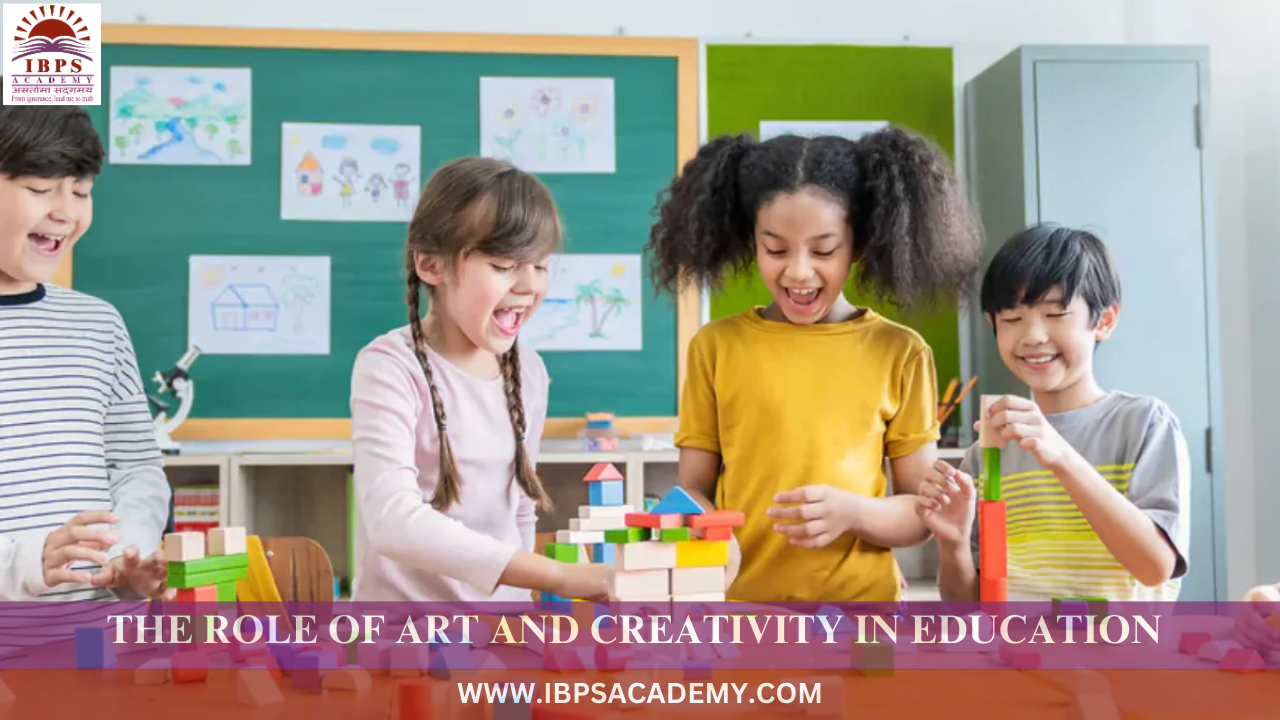THE ROLE OF ART AND CREATIVITY IN EDUCATION
Published on: Dec 27, 2024
THE ROLE OF ART AND CREATIVITY IN EDUCATION
The role of art and creativity in education is profound and multifaceted, influencing both academic development and emotional growth. Art and creative expression encourage students to think critically, solve problems, and communicate effectively. Here are several key ways in which art and creativity impact education:
1. Fostering Critical Thinking and Problem-Solving
- Creativity enhances cognitive abilities by encouraging students to think in innovative and non-linear ways. Artistic activities like drawing, painting, or sculpture require students to approach problems from multiple perspectives, promoting flexibility in thinking.
- The process of creating art involves experimentation, risk-taking, and discovering new solutions, which strengthens problem-solving skills that are valuable across all subjects.
2. Developing Emotional Intelligence
- Art allows students to express their feelings, thoughts, and experiences, leading to greater emotional awareness and regulation.
- Engaging in creative activities can help students process emotions, manage stress, and develop empathy for others.
- Through storytelling, theater, and music, students learn to connect with different emotions and perspectives, which enhances their social and emotional development.
3. Improving Academic Performance
- Studies have shown that integrating the arts into the curriculum improves student performance in other subjects like math, science, and language. The creativity required for artistic endeavors helps students develop cognitive skills that apply to academic challenges.
- For example, students who participate in music programs often show better mathematical abilities, as rhythm and patterns in music are closely related to mathematical concepts.
4. Promoting Cultural Awareness and Diversity
- Art and creativity provide opportunities for students to explore different cultures, traditions, and histories. Through visual arts, music, and literature, students can learn about diverse perspectives and develop a broader understanding of the world.
- Exposure to a variety of art forms encourages respect for diversity, which is essential in our increasingly globalized society.
5. Building Confidence and Self-Expression
- Artistic activities provide a platform for self-expression. By creating art, students develop a sense of ownership over their work, which fosters self-confidence.
- The freedom to experiment with different materials, ideas, and forms encourages students to take risks and express themselves without fear of judgment.
6. Enhancing Collaboration and Teamwork
- In disciplines like theater, dance, and group art projects, students must work together to achieve a common goal. This enhances their ability to collaborate, communicate effectively, and work as a team.
- These collaborative experiences prepare students for success in both personal and professional settings, where teamwork is often key.
7. Engaging Diverse Learners
- Art education can cater to various learning styles, making it an inclusive tool in the classroom. Visual learners can benefit from drawing or painting, while kinesthetic learners might thrive through dance or sculpting.
- For students who might struggle with traditional academic subjects, art can be a gateway for learning and building self-esteem, providing a sense of accomplishment.
8. Encouraging Innovation
- Art education encourages an innovative mindset that is essential in today’s rapidly changing world. By pushing boundaries and thinking outside the box, students can approach challenges with fresh ideas and solutions.
- The integration of technology in art (digital art, animation, etc.) is also helping to prepare students for future careers in creative industries, such as game design, advertising, and entertainment.
9. Developing Attention to Detail and Patience
- Many art forms require students to focus on minute details, such as the careful placement of colors or the nuances of a musical score. This attention to detail strengthens students' ability to concentrate and refine their work.
- Artistic practices often take time and patience, teaching students the value of persistence and long-term effort.
10. Creating a Balanced and Holistic Education
- Incorporating the arts into education ensures a more balanced curriculum that nurtures both intellectual and emotional growth. By developing artistic skills, students have the opportunity to engage both sides of their brain, supporting their overall cognitive development.
- Art can provide a break from more structured academic subjects, offering students a creative outlet that fosters relaxation and rejuvenation, which is beneficial for mental health.
Conclusion
Art and creativity play an integral role in shaping well-rounded, innovative, and emotionally intelligent individuals. By embracing art in education, schools can provide students with the tools they need to think critically, express themselves, and engage with the world around them in meaningful ways. The skills learned through artistic pursuits often transfer to other areas of life, helping students become creative thinkers and effective problem-solvers. As such, creativity is not just a supplemental part of education but a core component in preparing students for the challenges of the future.


